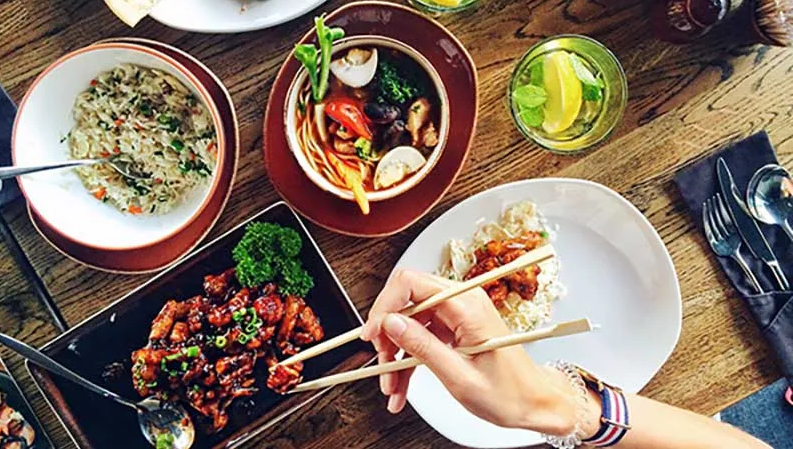In an age where Instagram feeds overflow with perfectly plated traditional dishes and food blogs wax lyrical about ancestral cooking wisdom, a particularly seductive narrative has emerged around Kashmiri cuisine. This story tells us that our grandmothers’ kitchens were temples of nutritional perfection, where every dish was a healing elixir and every cooking method a masterclass in health optimization. It’s a compelling tale—and it’s dangerously misleading.
The recent discourse lamenting the “death” of traditional Kashmiri cooking methods represents more than nostalgic yearning; it embodies a form of culinary fundamentalism that threatens to guilt-trip working families, ignore scientific evidence, and romanticize practices that were often born of necessity rather than nutritional superiority. While couched in concerns about health and authenticity, such arguments reveal a troubling disconnect from contemporary realities and a selective reading of both history and science.
The idealization of traditional cooking methods rests on a fundamental misunderstanding of what those methods actually entailed. Yes, food was cooked slowly over firewood, but this wasn’t because our ancestors possessed superior nutritional wisdom—it was because they had no alternative. The romantic image of ingredients “releasing their essence” through prolonged cooking conveniently omits the reality of smoke-filled kitchens that caused chronic respiratory problems, particularly among women who spent hours inhaling toxic fumes from wood-burning stoves.
Indoor air pollution from traditional cooking methods remains one of the leading causes of preventable deaths globally, primarily affecting women and children in developing regions. The World Health Organization estimates that 3.8 million people die annually from illnesses attributable to household air pollution from cooking with solid fuels. Yet contemporary food purists would have us believe that returning to these methods represents a form of enlightened living.
The notion that traditional bread-making—with its hand-kneading and natural fermentation—was inherently superior ignores the physical toll such labor-intensive processes took on individuals, particularly women who had no choice but to dedicate their entire days to food preparation. This wasn’t empowerment; it was often a form of domestic imprisonment disguised as cultural practice.
Perhaps more troubling than the historical revisionism is the selective and often incorrect interpretation of nutritional science used to support these arguments. The claim that pressure cooking systematically destroys vitamins represents a fundamental misunderstanding of food chemistry. Extensive research demonstrates that pressure cooking actually preserves more nutrients than conventional boiling methods due to reduced cooking time and minimal water usage. A study published in the Journal of Food Science found that pressure cooking retained significantly more vitamin C in vegetables compared to traditional boiling methods.
The assertion that rice cooked in electric cookers has altered glycemic properties reveals another scientific misunderstanding. The glycemic index of rice is primarily determined by the grain variety, degree of processing, and starch composition—not the cooking vessel. Traditional starch-draining methods may alter texture, but they don’t fundamentally change the carbohydrate content that affects blood sugar levels. This kind of pseudoscientific reasoning undermines legitimate nutritional education and creates unnecessary anxiety around perfectly safe cooking methods.
The most insidious aspect of culinary purism lies in its implicit classism and gender bias. The suggestion that families should abandon modern appliances in favor of time-consuming traditional methods assumes a level of privilege that simply doesn’t exist for most contemporary households. Working parents, single caregivers, elderly individuals, and people with disabilities rely on modern cooking equipment not out of laziness or cultural ignorance, but out of practical necessity.
When food purists argue that pressure cookers should be “reserved for pulses, not every dish,” or that microwaves should never be used, they’re essentially arguing that proper nutrition should be accessible only to those with unlimited time and physical capability. This represents a form of culinary elitism that excludes vast segments of the population from what these advocates claim is “authentic” or “healthy” eating.
The irony of culinary fundamentalism becomes apparent when we examine the historical context of food traditions. The kandurs (local bakeries) that purists celebrate as bastions of authenticity were themselves innovations, adaptations to urban living that replaced even older methods of bread preparation. Food cultures have always evolved, incorporating new techniques, ingredients, and technologies that improved efficiency, safety, or flavor.
The fermentation techniques praised by traditionalists were originally developed not for optimal nutrition, but for food preservation in the absence of refrigeration. The slow cooking methods weren’t chosen for their superior nutrient retention, but because they were the only options available with limited fuel resources and primitive cooking equipment.
While food purists obsess over cooking methods, they conveniently ignore the elephant in the room: the dramatic transformation of our daily activity levels and eating patterns. The rise in diabetes, obesity, and digestive disorders that these critics attribute to modern cooking appliances correlates far more strongly with sedentary lifestyles, increased portion sizes, and frequent snacking than with whether rice is cooked in a traditional pot or electric cooker.
Our ancestors who cooked over firewood weren’t healthier because of their cooking methods—they were healthier because they walked miles daily, performed physically demanding labor, ate smaller portions, and consumed food only at designated meal times. The traditional Kashmiri lifestyle involved hours of physical activity: carrying water from distant sources, grinding spices by hand, kneading dough manually, and walking to local markets. This constant movement naturally regulated metabolism and insulin sensitivity in ways that no cooking method can replicate.
The contemporary epidemic of lifestyle diseases isn’t caused by pressure cookers destroying vitamins—it’s caused by office workers sitting for eight hours daily, then coming home to binge-watch television while snacking on processed foods. The same rice that purists claim becomes “toxic” when cooked in an electric cooker would be perfectly healthy for someone who walks 10,000 steps daily and eats it as part of a balanced meal rather than as a late-night snack while scrolling through social media.
Contemporary kitchen appliances, when used properly, often provide superior nutritional outcomes compared to traditional methods. Electric rice cookers with precise temperature control reduce the risk of undercooking, which can harbor harmful bacteria. Microwave ovens, contrary to popular mythology, don’t destroy nutrients any more than conventional cooking methods—and often preserve them better due to shorter cooking times and minimal water usage.
The concerns about chemical contamination from non-stick cookware and plastic containers, while legitimate, are manageable through proper usage rather than complete avoidance. Modern food safety regulations and improved manufacturing standards have significantly reduced the risks associated with these materials when used as intended.
None of this means we should uncritically embrace every modern cooking innovation or abandon traditional flavors and techniques entirely. Rather, it suggests we need a more nuanced approach that acknowledges both the benefits of contemporary methods and the cultural value of traditional practices.
The real threat to Kashmiri culinary heritage isn’t the pressure cooker or microwave oven—it’s the loss of knowledge about spice combinations, traditional flavor profiles, and seasonal cooking practices. These elements can be preserved and celebrated while utilizing whatever cooking methods are most practical and accessible for individual families.
The path to healthy, culturally meaningful eating doesn’t require a wholesale rejection of modernity or a return to idealized past practices that were often more burdensome than beneficial. Instead, it requires food education that empowers people to make informed choices based on accurate information rather than nostalgic mythology.
We can honor our culinary heritage while embracing innovations that make healthy, flavorful food more accessible to diverse populations. The goal should be nourishing our families and communities, not adhering to arbitrary standards of authenticity that serve no one except those privileged enough to have unlimited time and resources.
True food wisdom lies not in rigid adherence to traditional methods, but in understanding the principles behind good nutrition and adapting them to contemporary realities. Our grandmothers would likely be amazed by the tools available in modern kitchens—and they’d probably use them.
(Author is a doctoral fellow at Aligarh Muslim University and is a food enthusiast writing about Kashmiri Culinary Practices. He can be mailed at [email protected])








